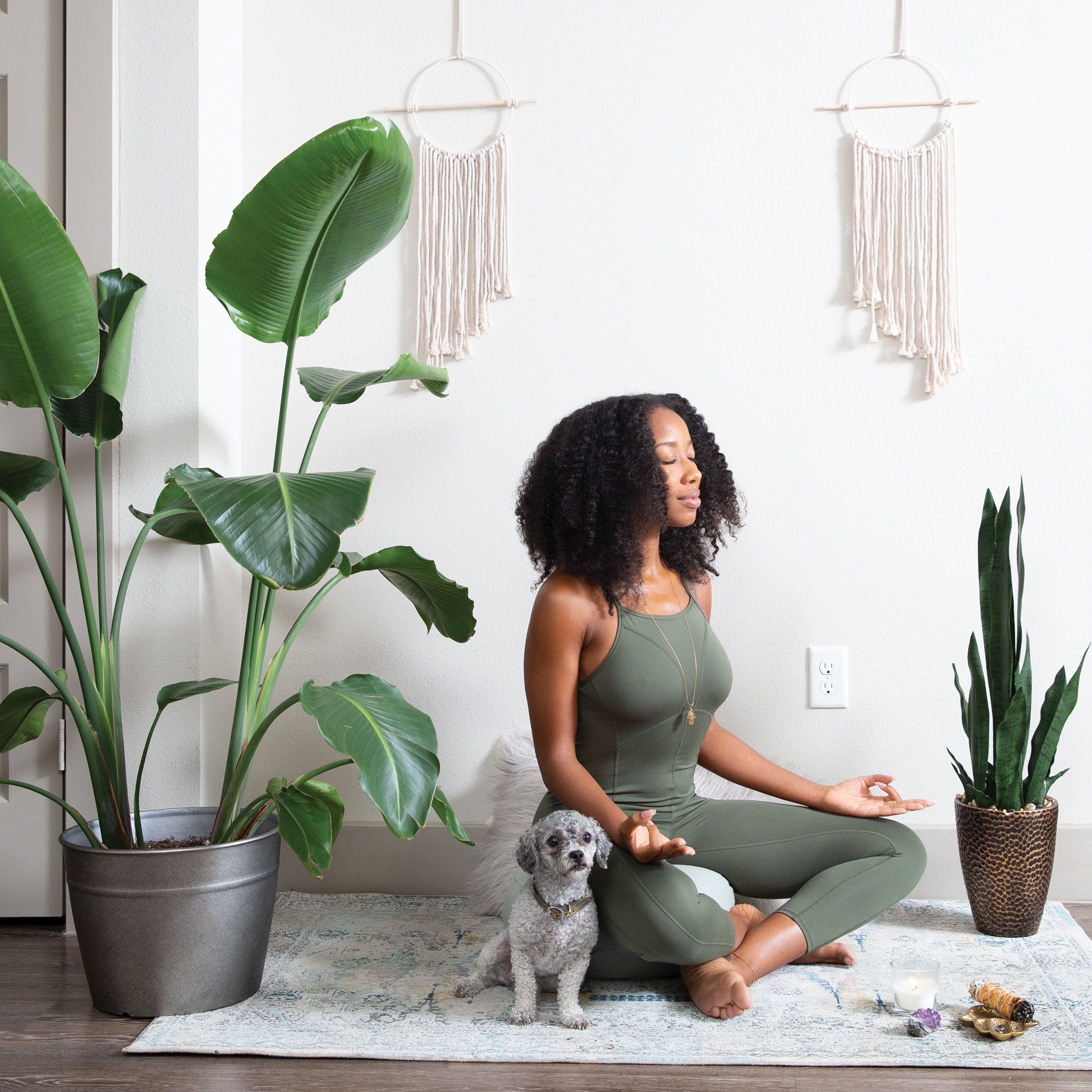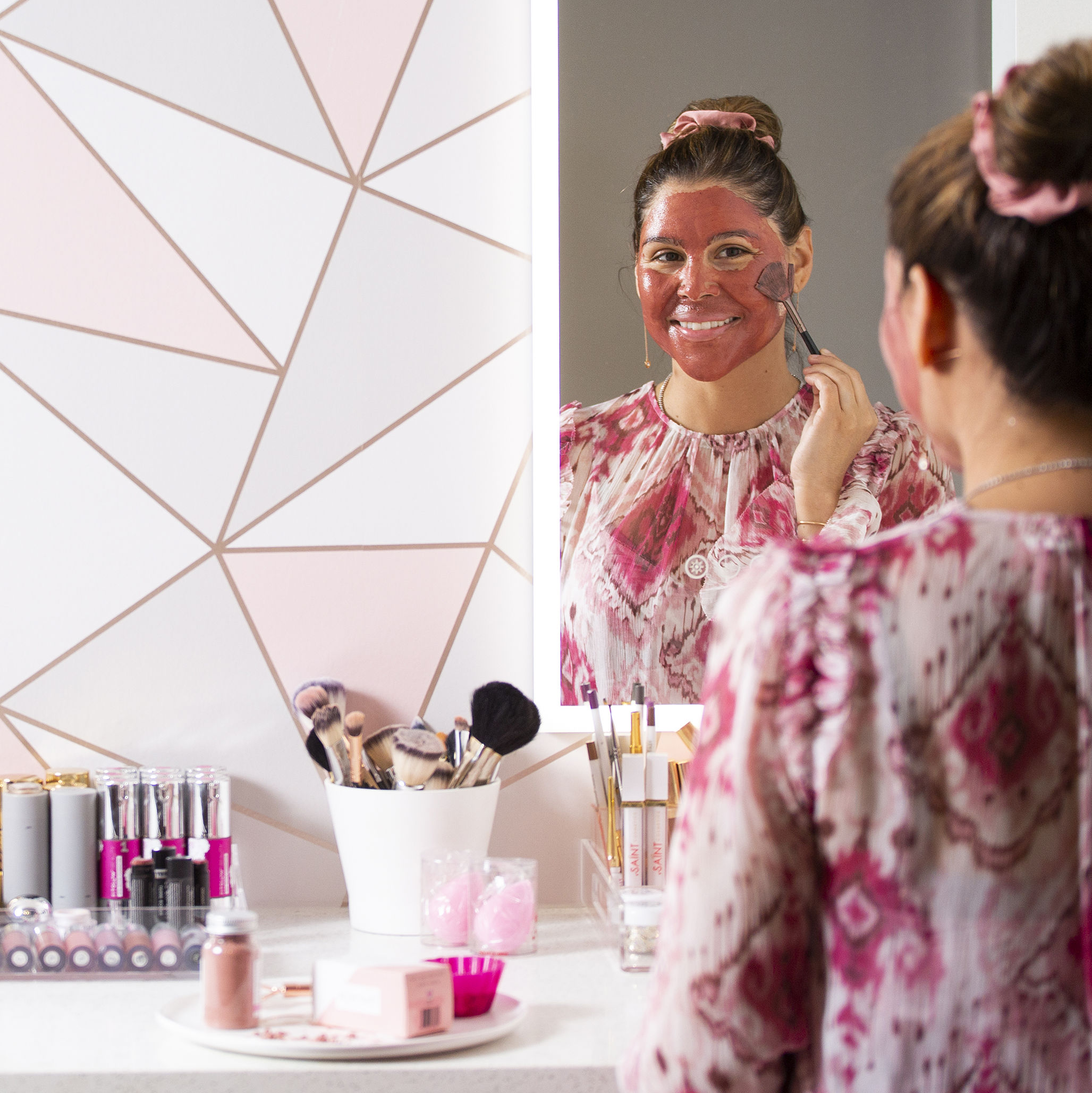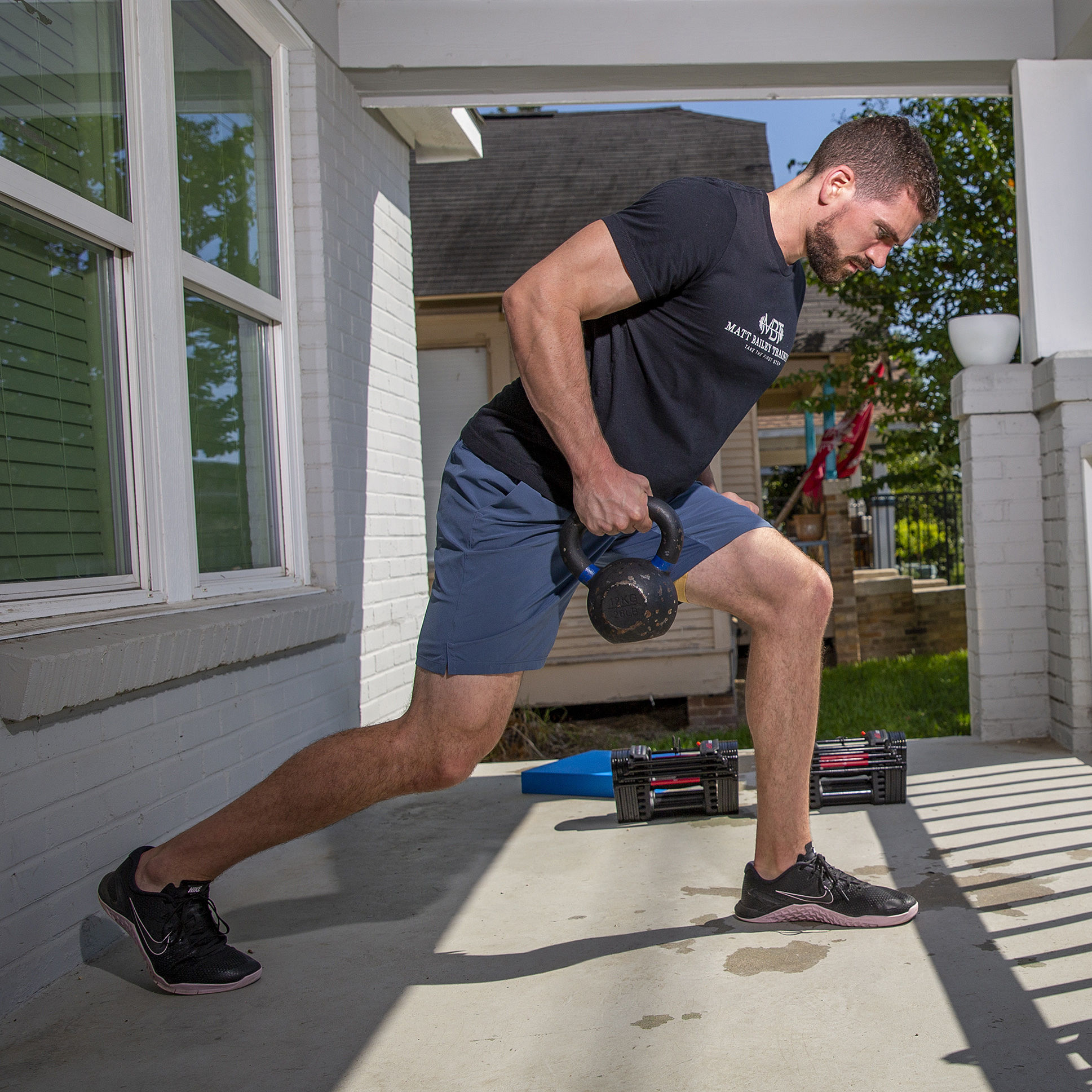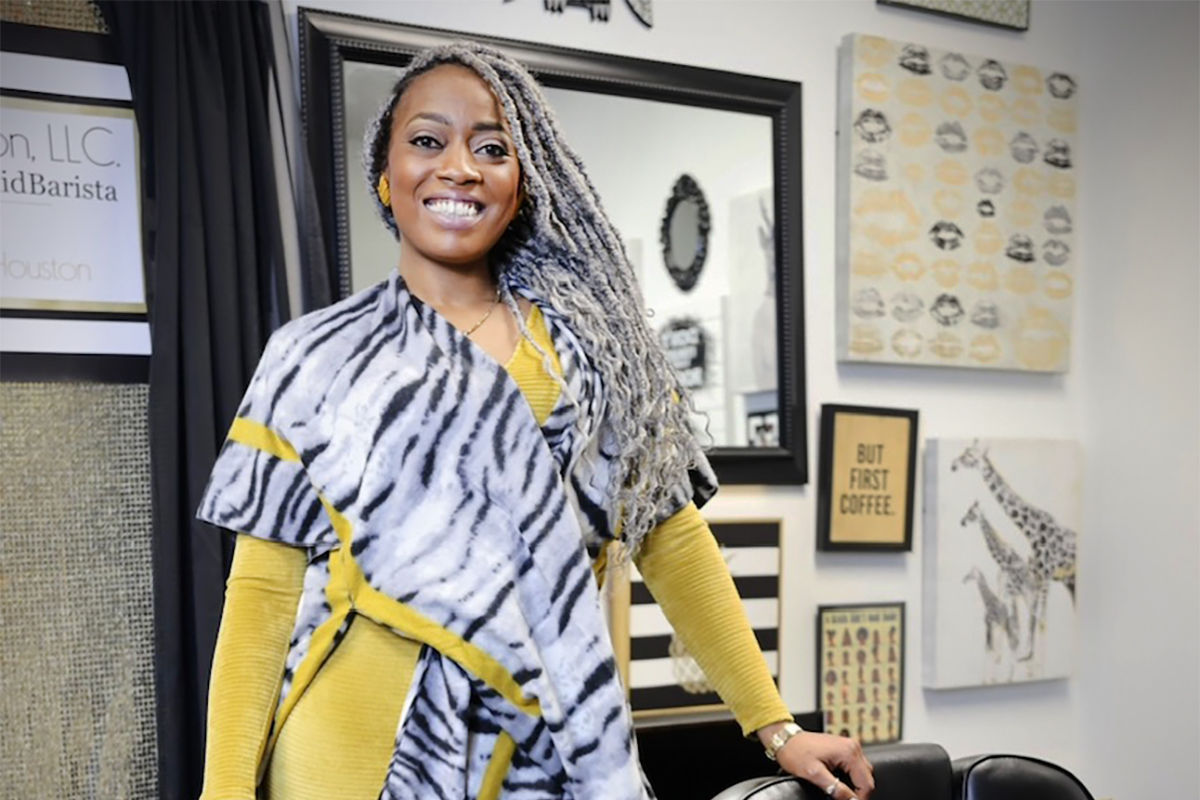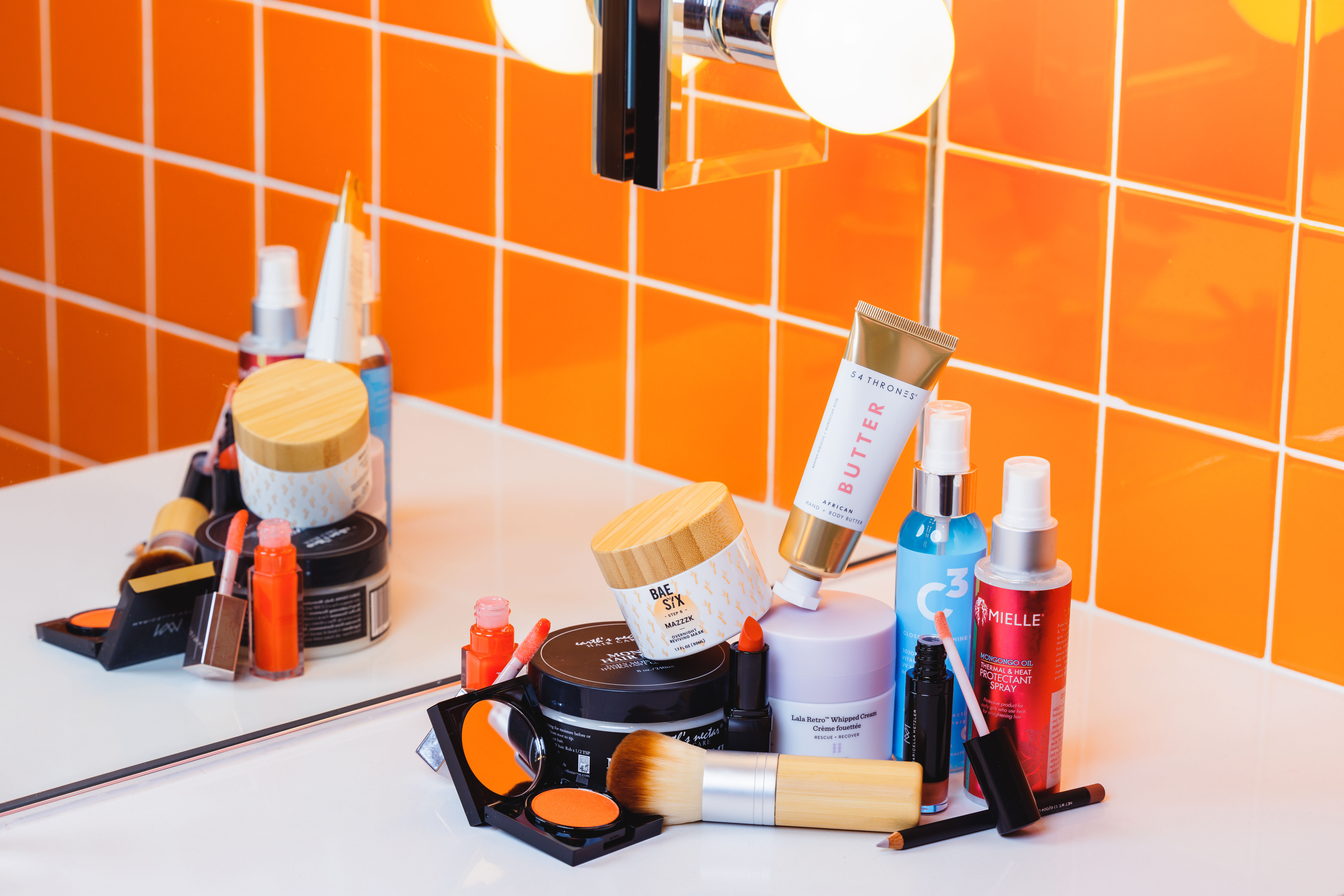How to Color and Cut Your Hair at Home (Even Your Bangs)
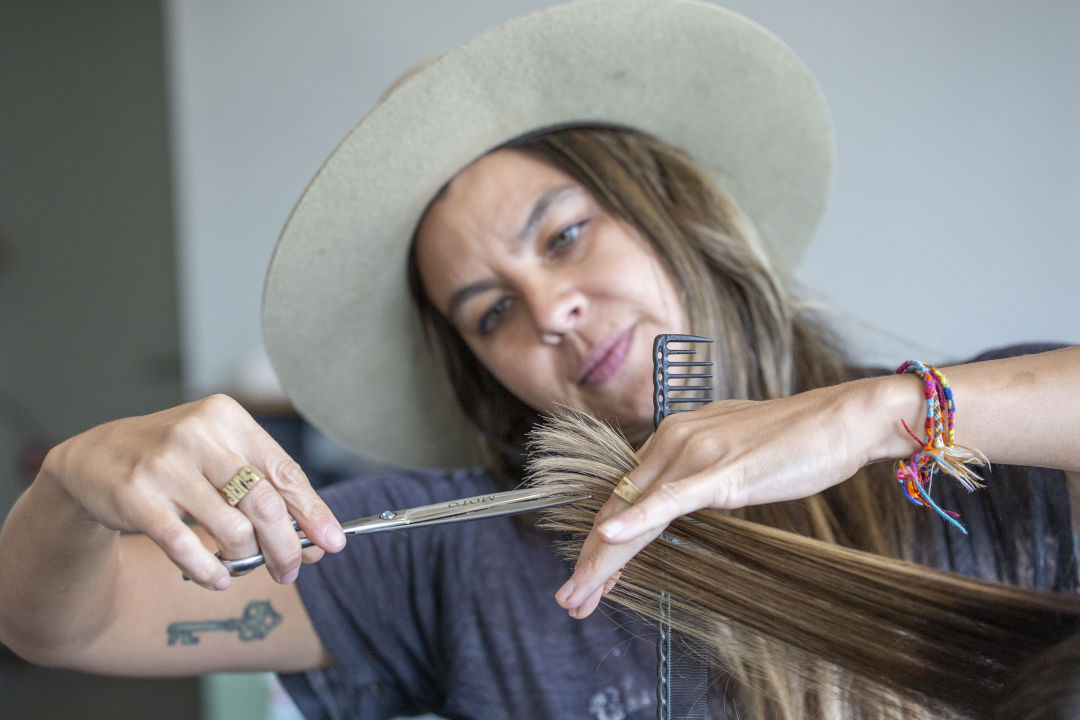
Brandi Lisenbe demonstrates the point-cutting technique.
Image: Thomas Shea
The scissors are in hand. The YouTube tutorial is streaming. And you’re staring at the mirror with a mix of determination and fear—time to say sayonara to a year’s worth of split ends! But before you start snipping, renowned stylist Brandi Lisenbe, who co-owns beloved Do or Dye TX (doordyetx.com) on Washington Avenue, has some tips on how to avoid damage and disaster when cleaning up your own ’do.
Make the cut.
For a trim, get a pair of professional scissors (anything less has the tendency to make it look as if you hacked at your hair with a weedeater), grab super-small sections of hair, and start trimming. You shouldn’t be taking much off—only cut the split ends, the raggedy broken bits where the hairs are literally, you know, splitting—as you work your way through your mane. If you do this on the reg, you’ll only be taking off a centimeter or less.
Pay attention to how you’re cutting, Lisenbe warns, because a blunt, straight-line chop is impossible to blend. And stay calm as you work since panic-driven scissor frenzy—which Lisenbe says is caused by poor souls who “keep on trying to make it even, and it’s never even, so they cut off way too much”—can lead to the most horrifying outcome of all: “They end up giving themselves a mullet.”
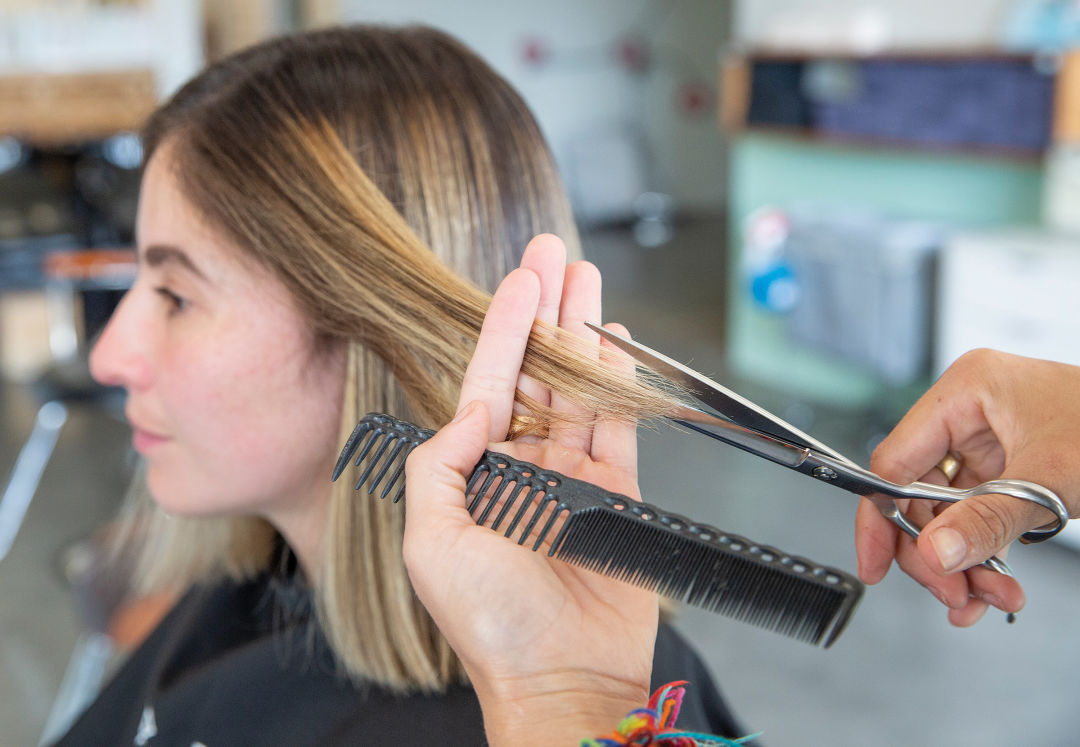
Image: Thomas Shea
Want bangs? Again, don’t cut straight. Hold the scissors at an angle—what stylists call point-cutting—when making the initial cut, and commit to the fact that you may have to play around with them to correct any uh-ohs and get the symmetrical shape you want. But with your bangs, as with the rest of your hair, be realistic and if things aren’t going as planned, call it quits and either get really into wearing hats and buns to hide your mistakes, or go ahead and seek out a pro before you’ve done so much damage that a Mia Farrow-circa-Rosemary’s Baby cut is the only option. Damage control is far better than going back in with the murder weapon.
Let’s talk about color.
Beware the first box-dye that speaks to you, lest it turn your hair to straw. “What I would first suggest to anyone who would want to dye their hair at home is to go through a professional color line,” says Lisenbe. The Italian brand Della Ricca (dellarica.com) also virtually pairs you with a hair stylist who checks out pics of your hair, tells you how to achieve your desired results, and sends you the salon-grade products to do so.

Wash out dyes: a do.
Image: Shutterstock/Anetlanda
Also stylist-approved: Wash-out dyes, or color-depositing shampoos that don’t require bleaching like permanent dyes and will rinse out fairly easily if you discover you aren’t, in fact, meant to be a redhead. But be forewarned, even these less-than-permanent dyes can stain clothes and countertops.
For root touch-ups or if you already know that the DIY route will likely leave you bald? “A lot of people have kind of started embracing getting their hair stylists to go into their backyards,” says Lisenbe. That’s not a euphemism. The backyard is the perfect spot, in this day and age, if your hairdresser is willing. Your stylist can wear a mask, stay outside, and be on their merry way while you head back in to wash and dry. Everybody wins.
For the guys.
Cleaning up the neckline can be done in no time, but the first crucial step is familiarizing yourself with a good set of clippers and guards. (She’s a fan of Wahl’s All Star Clipper and Trimmer Combo.) Honestly, you may want to get a significant other or someone else with a vested interest in how this turns out to give you a hand, Lisenbe notes, but no matter how you tackle this, watch the clipper lengths. “I wouldn’t really recommend going past a three if you don’t know what you’re doing,” she says. If you want a short haircut, Lisenbe recommends using a four or five guard.
For facial hair, again, start with a longer guard (a three or four) for the first pass of the face, and go shorter once you feel comfortable. If you’re just wanting to clean up your mountain man look, this is when the length should be good to start shaping. If you’re intent on getting a de-whiskered mug, just keep going from there. “Cut just underneath the jawline to get a clean, even trim,” says Lisenbe.

